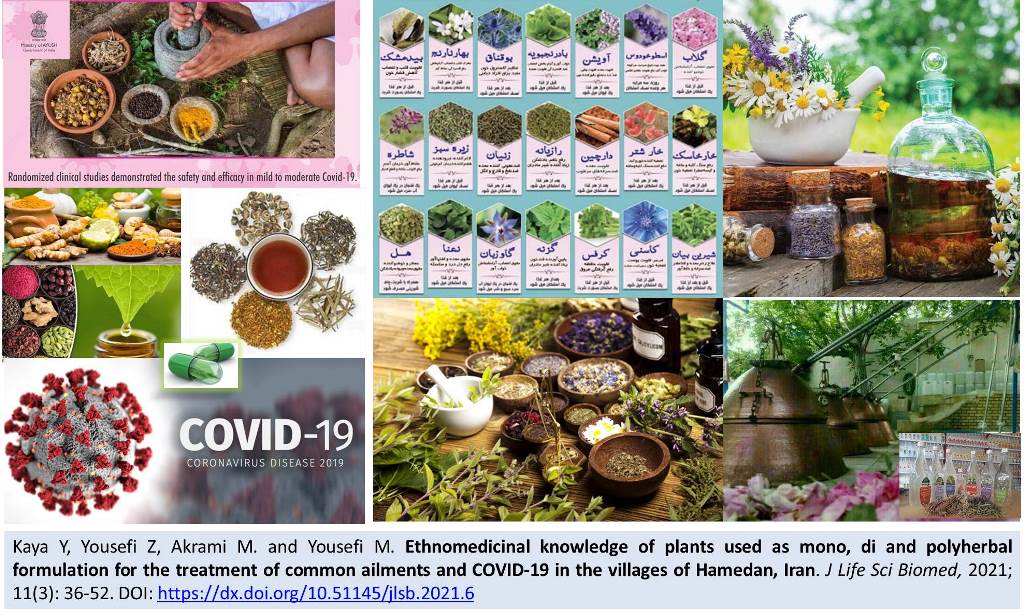Previous issue | Next issue | Archive
![]() Volume 11 (3); May 25, 2021 [Booklet]
Volume 11 (3); May 25, 2021 [Booklet]
Anticoagulant therapy in patients with atypical COVID-19 pneumonia
| Anticoagulant therapy in patients with atypical COVID-19 pneumonia |
Ibadov RA, Khamraeva GSh, and Ibragimov SKh.
J. Life Sci. Biomed., 11(3): 30-35, 2021; pii:S225199392100005-11
DOI: https://dx.doi.org/10.51145/jlsb.2021.5
Abstract
Aim. In a comparative aspect, this article aimed to evaluate the effectiveness of optimized intensive care protocols for severe and extremely severe COVID-19. Methods. During the study period, 4922 patients were treated in the intensive care units of the Republican Specialized Multidisciplinary Infectious Diseases Hospital (678 in the comparison group and 4244 in the main group). The developed protocol of anticoagulant therapy was applied to all patients in the main group. Results. There was an improvement in prothrombin time (PT) from 12.0±0.4 to 13.6±0.3 sec (P < 0.05) on day 3, from 14.7±0.4 to 16.2±0.3 sec (P < 0.05) on day 10, clotting time from 3.1±0.1 to 3.3±0.1 min (P < 0.05) and from 3.7±0.1 to 4.5±0.1 min, respectively, and fibrinogen from 4.6±0.2 to 4.2±0.1 g/l (P < 0.05) and from 4.0±0.1 to 3.4±0.1 g/l (P < 0.05), a decrease in the frequency of fatal thromboembolic complications from 25.1% to 16.6% (P < 0.001). Conclusion. The introduction of optimized tactics for anticoagulant therapy in patients with severe and extremely severe COVID-19 course made it possible to accelerate the dynamics of prothrombin time, fibrinogen, and blood clotting time (BCT), which ensured a decrease in the likelihood of developing fatal thromboembolic complications in the intensive care unit.
Keywords: COVID-19, Anticoagulant therapy, Respiratory therapy, Patients
[Full text-PDF] [XML] [ePub] [Export citation to BibTeX, RIS & EndNote] [How to Cite] [Semantic Scholar] [Dimensions ID]
Ethnomedicinal knowledge of plants used as mono, di and polyherbal formulation for the treatment of common ailments and COVID-19 in the villages of Hamedan, Iran
| Ethnomedicinal knowledge of plants used as mono, di and polyherbal formulation for the treatment of common ailments and COVID-19 in the villages of Hamedan, Iran |
Kaya Y, Yousefi Z, Akrami M. and Yousefi M.
J. Life Sci. Biomed., 11(3): 36-52, 2021; pii:S225199392100006-11
DOI: https://dx.doi.org/10.51145/jlsb.2021.6
Abstract
Aim. This study aimed to document the native ethnomedicinal plants in mono, di and polyherbal combination used by people to cure various ailments, Qorveh-e Darjazin district of Hamedan province of Iran. Methods. Data were collected through both individual interviews and focus group discussions (FGDs) using interviewing 87 people in 28 villages. Plants voucher samples were also collected and classified with their families, botanical terms, local names, usages and miscellaneous matters via international and standard questionnaires. A total of 45 plant species belonging to 26 families are reported to be used for the treatment of a wide range of complaints, such as respiratory diseases like coronavirus (COVID-19), cardiovascular diseases, hypertension, ulcers, anemia, catarrh, digestive and urinary systems disorders, irregular menstruation, skin disorders, bone and rheumatic disorders etc. by monoherbal (45), diherbal (70) and polyherbal (57) ethnomedicinal formulations. Data were compared with those formerly gathered. Results. The authors found evidence that di and polyherbal known as Ayurvedic medicine is a preferred folk medicinal system of this area to prevent unwanted suffering of intense and prevalent ailments especially for irregular menstruation, anemia, calming the nervous systems, diarrhea, gastric ulcers, blood purification, hypertension, bone and rheumatic disorders, and severe acute respiratory syndrome coronavirus 2 (SARS‑CoV‑2 or COVID-19) with the mixed formulation for natural elements in a particular ratio. Conclusion. The study reveals the rich polyherbal knowledge of the people of 28 villages of Hamadan that possess in traditional medicine. Recommendation. Polyherbal formulation of plants used by people of this area can be considered as an applicable safe strategy in control measures against novel diseases like COVID-19 and achieve greater therapeutic efficacy.
Keywords: Ailment, Antioxidant, COVID-19, Hamedan, Hyper inflammation, Nutraceuticals, Phytochemicals, Polyherbal formulation, Questionnaires, Traditional medicine
[Full text-PDF] [XML] [ePub] [Export citation to BibTeX, RIS & EndNote] [How to Cite] [Semantic Scholar] [Dimensions ID]
Effect of aerobic exercise on blood hemoglobin level and quality of life in postmenopausal anemic women: randomized controlled clinical trial
| Effect of aerobic exercise on blood hemoglobin level and quality of life in postmenopausal anemic women: randomized controlled clinical trial |
ElSherif AM, Aly AA and Yousef AM.
J. Life Sci. Biomed., 11(3): 53-57, 2021; pii:S225199392100007-11
DOI: https://dx.doi.org/10.51145/jlsb.2021.7
Abstract
Introduction. Postmenopausal elderly women have an increased risk for nutritional anemia. Exercise training has a positive effect on hemoglobin mass by increasing stimulation of erythropoiesis, which assists the blood to carry bigger amount of oxygen. Aim. This study has been conducted to investigate the effect of moderate intensity aerobic exercises on hematological value and quality of life in postmenopausal anemic women. Methods. Thirty anemic postmenopausal women were assigned randomly into two equal groups; A) performed moderate intensity aerobic exercise in the form of walking on treadmill for 30 minutes, 3 sessions per week and B) without aerobic exercise. Both groups received the same supplement including one capsule that contain Iron supplement (10 mg) and multi vitamins as well as essential trace elements, daily. The hematological values [hemoglobin (Hb) and red blood corpuscles (RBCs) count] and assessment of the quality of life [Six-Minute Walk Test (SMWT) and Flow State Scale (FSS)] at pre and post 3 months as well as 6 months of treatment were measured and evaluated. Results. There was statistically significant improvement (p<0.001) in the Hb and RBCs values and SMWT and FSS between before and after 3 as well as 6 months of treatment in both groups. Also, comparison between both groups at 3 and 6 months showed significant differences in favors of group A. Conclusion. Aerobic exercise can increase hematological values and has a positive improvement for the quality of life in anemic post-menopausal women.
Keywords: Anemia, Menopause, Exercise, Flow State Scale, Six Minute Walk Test
[Full text-PDF] [XML] [ePub] [Export citation to BibTeX, RIS & EndNote] [How to Cite] [Semantic Scholar] [Dimensions ID]




